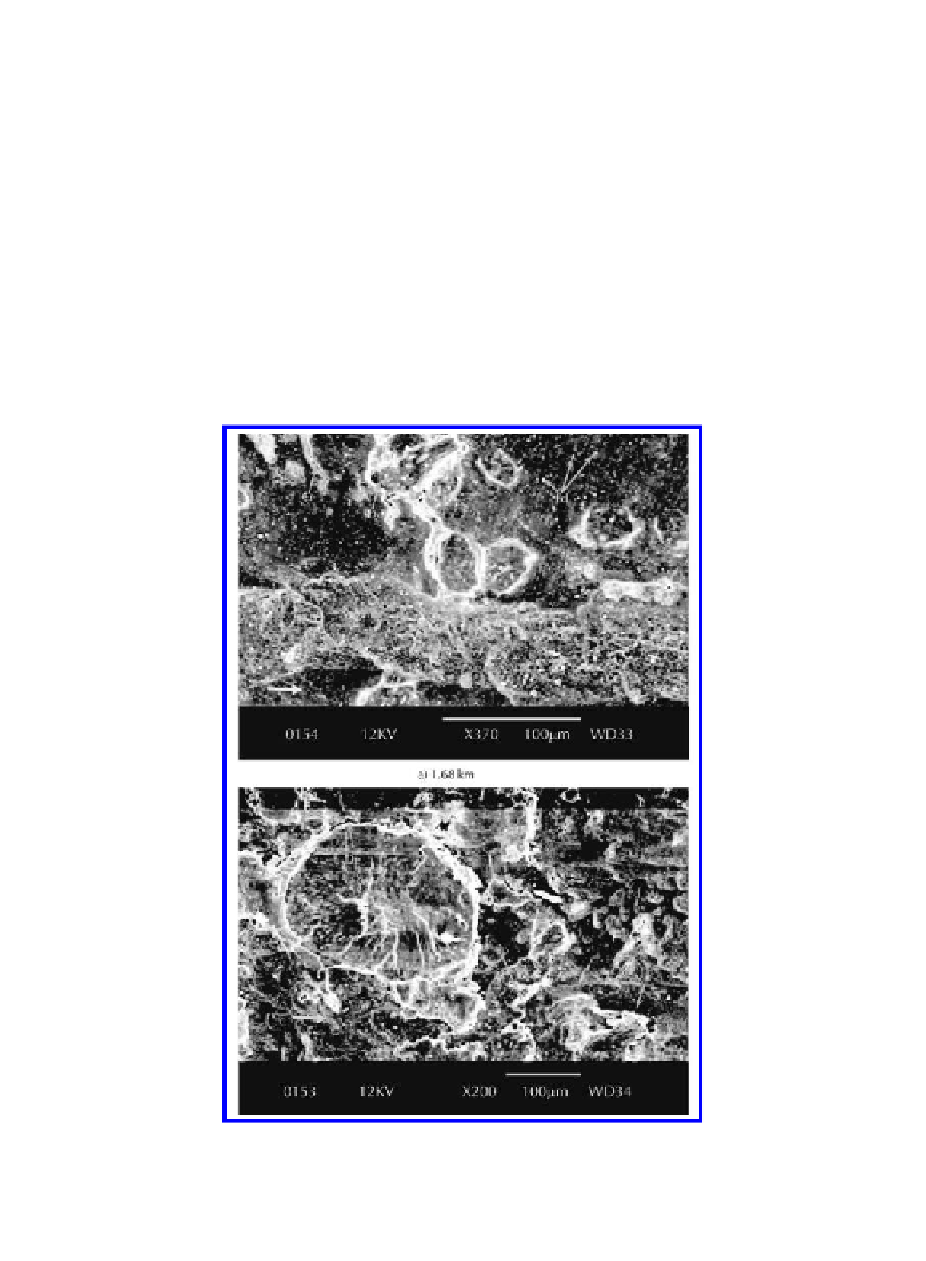Biomedical Engineering Reference
In-Depth Information
Worn surfaces of the Composite morphology
Dry Contact Condition
Figure 8(a) shows evidence of fiber debonding micro-cracks associated with generat-
ed fine debris. At longer sliding distance (5 km), Figure 8(b), the wear mechanism was
predominant by plastic deformation, detachment and debonding of fibers. The Figure
shows the end of fibers which is covered by polyester associated with plastic deforma-
tion indicating high intimate contact between asperities (composite and counterface)
leading to higher friction coefficient values, cf.
Figure 7(a)
.
Due to the side force being
anti parallel to the sliding direction, there was evidence of softened polyester (marked
SP) causing higher material removal when the sliding escalates. It was reported that
a high friction coefficient is possible when the contact of rubbing was between neat
polyester and stainless steel (Yousif et al., 2008). Moreover, the softened polyester
regions had modified the roughness of the counterface (cf.
Figure 10(b))
compared to
the virgin one (cf. Figure 10(a)).
Figure 8.
Micrographs of worn surfaces of T-BFRP composite under 30 N at different sliding distances
for dry contact condition (a) 1.68 km; (b) 5.0 km.
(Crack: crack,
De: debonding, Dt: detachment, Fd: fine debris, Pd: plastic deformation, R: resinous,
Sp: softened polyester)

Search WWH ::

Custom Search